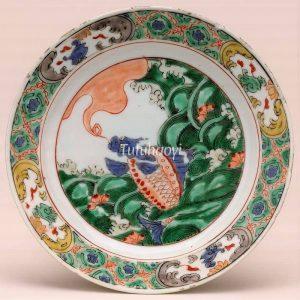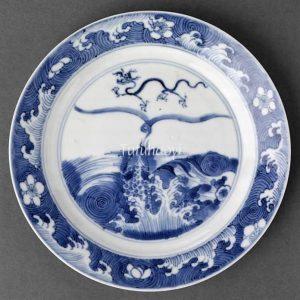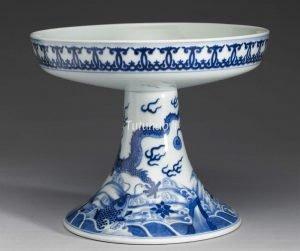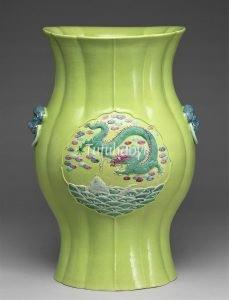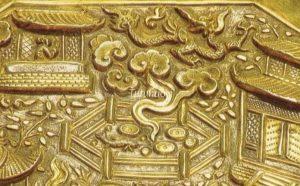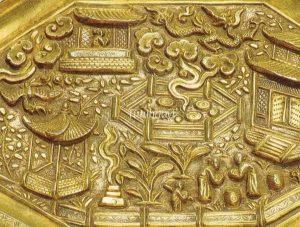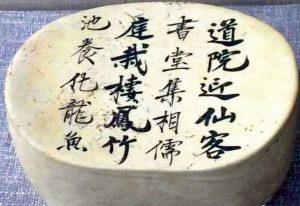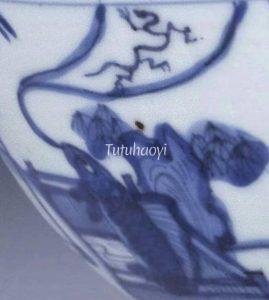Fish turning into dragon
鱼化龙
© Tutuhaoyi.com owns the copyright of the description content for the images attached. Quoting all or part of the description content on this page is permitted ONLY IF ‘Tutuhaoyi.com’ is clearly acknowledged anywhere your quote is produced unless stated otherwise. (本页描述内容版权归Tutuhaoyi.com所有,转发或引用需注明 “Tutuhaoyi.com”, 侵权必究, 已注开源信息的条目除外。)
Ordinary fish in the pond was hoped by ancient Chinese people to turn into a vigorous and powerful dragon flying in the sky. It can be traced back to as early as Song dynasty in Chinese literature for children or young people who studied hard and had high expectations from their elder generations. In old days, passing examinations with flying marks is one of the very few ways to achieve high official positions thus receive high income.
Related Motif:
Related Pun Picture:
May you remain pure, clean, and incorruptible 清白廉洁
Related blog:
The Importance of Deciphering Pictorial Scenes on Chinese Antiques
Fig 1: porcelain dish, Kangxi period (1662–1722), Qing dynasty, courtesy of the National Palace Museum, Taipei
Fig 2: famille verte square-shaped tray, Kangxi period (1662–1722), Qing dynasty, courtesy of the Trustees of the British Museum
Fig 3: famille verte porcelain plate, Kangxi period (1662–1722), Qing dynasty, courtesy of the Trustees of the British Museum
Fig 4-5: a pair of blue-and-white porcelain plates, Kangxi period (1662–1722), Qing dynasty, courtesy of National Gallery of Victoria, Melbourne. Photo: National Gallery of Victoria, Melbourne
Fig 6: stem dish, Qianlong period (1736–95), Qing dynasty, courtesy of the National Palace Museum, Taipei
Fig 7: green-ground floral-shaped vase, Guangxu period (1875–1908), Qing dynasty, courtesy of the National Palace Museum, Taipei
Fig 8-9: gilt silver plate, Song dynasty (960–1279), courtesy of Fujian Provincial Museum
Fig 10: ceramic pillow, Song dynasty (960–1279), courtesy of Chinese scholar Huang Songtao
Fig 11-12: porcelain bowl, Wanli period (1573–1620) (circa), Ming dynasty, courtesy of the Trustees of the British Museum


